Last Updated on June 12, 2023 by Emma Reynolds
The rabbit anatomy has evolved to adapt to techniques that enable them to survive and evade predators. Whenever they spot predators, they run away very fast and hide in underground burrows.
Rabbits are prey animals that are hunted down by predators including humans. They’re found in every continent apart from Antarctica. Pet rabbits still have survival instincts that their ancestors had in the wild.
They have strong claws which they use to dig up these holes and create tunnels below the ground. Rabbits can survive in various climates. As pets, they can be kept both indoors and outdoors.
In this article, we will be looking at the rabbit anatomy to understand their various body parts from ear to tail. Let’s get started.
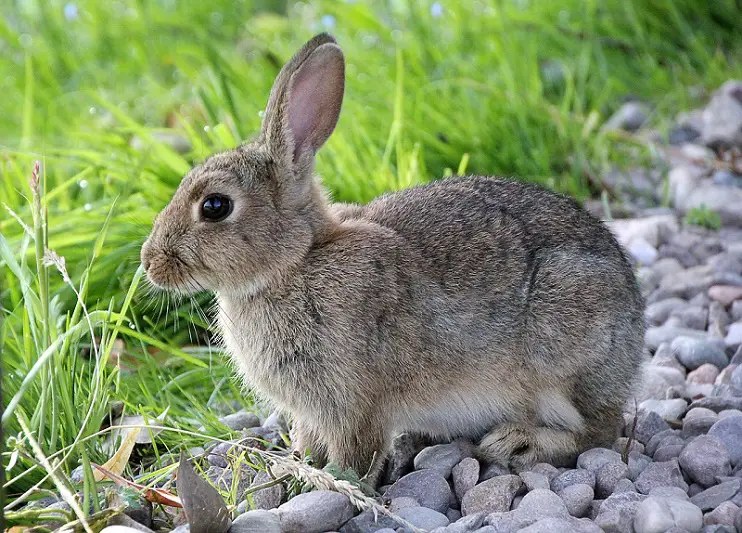
Contents
Rabbit Ears
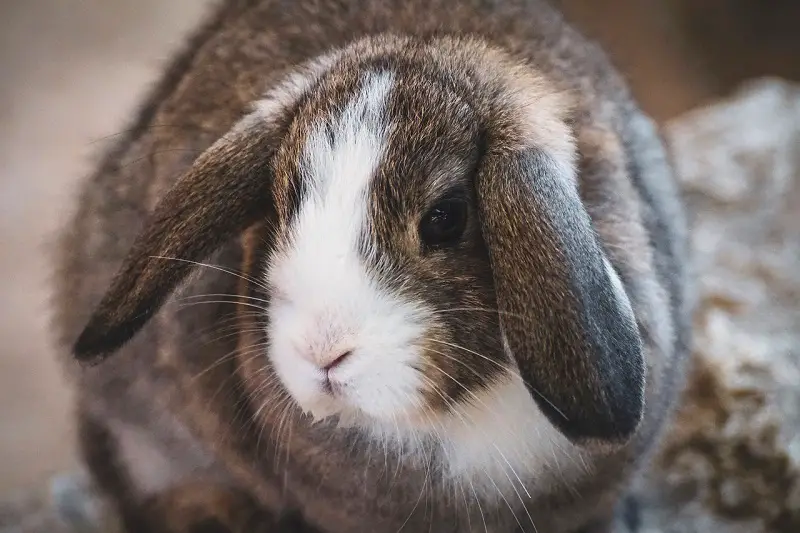
Rabbit ears are the most identifiable features of a rabbit’s anatomy. They are long and easily noticeable. They have two main functions:
Good hearing
Rabbits have very good hearing capabilities. They can hear even the slightest sounds that humans are not able to hear. Their hearing is so good that they can hear sounds as far as 2 miles away.
The ears also have high flexibility and can rotate to 270°. Each ear can move in different directions at the same time and listen to sounds from each direction separately. This enables them to detect predators from far away.
Regulate temperatures
A rabbit’s ears are covered with thin fur which enables them to feel temperatures easier compared to other body parts.
The outer part is filled with tiny blood vessels where the heat exchange takes place.
In hot weather, the vessels expand to release heat from the body while in cold weather, they contract to retain heat in the body.
This way, the body temperatures are regulated which prevents heat stroke and hypothermia.
Rabbit Eyes
Rabbits have large curious eyes located at the sides of the head. They have a 360° view enabling bunnies to see in every direction even behind them. Their only blind spot is directly in front of their noses.
If there is something near their nose, they will either sniff it or use their whiskers to sense it. Although they can see from every side, they do not have a good depth perception. They can only make out how far or big something is by moving their head back and forth.
Even with such big eyes, rabbits do not need to blink. Blinking keeps eyes moist and protects them from debris. Rabbits have a transparent membrane that covers their eyes like a third eyelid.
This membrane ensures that the eyes remain moist while protecting them from dust particles and sharp debris. Rabbits will only blink when necessary, only around 10 times per hour.
They will also sleep with their eyes open and predators will think that they are still awake. Having their eyes open keeps them alert at all times.
If a predator passes nearby, light receptors in the eye sense them and the brain alerts the rabbit.
Rabbit Nose
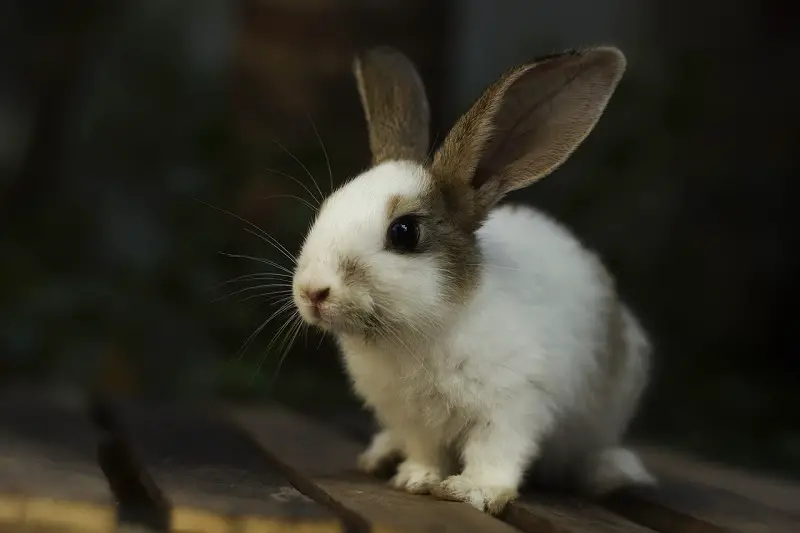
A rabbit’s tiny nose is known for its twitch. It can twitch for up to 150 times a minute. These sudden movements help bunnies to smell things much better.
Twitching stimulates the many scent receptors inside the nose and they are able to smell predators and food. If they are running fast, twitching enables them to breathe in quicker and easier.
The nose also regulates their temperatures because they lack the sweat glands found in humans.
Bunnies use moisture in the air to release and retain heat while inhaling and exhaling. Like dogs, rabbits will breathe in fast in hot weather to release too much heat.
Rabbit Teeth
Rabbits have 6 incisors and 22 cheek teeth which makes up a total of 28 teeth. They use the incisors to bite into vegetation and the cheek teeth to grind it down.
One characteristic of a rabbit’s teeth anatomy is its open roots which keep the teeth constantly growing.
Wild rabbits are always foraging and chewing on the bark of trees. This keeps the teeth worn down and prevents them from outgrowing. With domesticated rabbits, their food is not as rough as the one found in the wild.
This causes many pet rabbits to experience overgrown teeth which are painful. They need a constant supply of hay, crunchy veggies, and chew toys to aid in wearing them down.
Rabbits have strong jaws that they will use in self-defense sometimes. Although their first instinct is to run, if predators are already too close, rabbits will try to fight. They use these strong jaws to bite into the predators.
Rabbit Feet
Rabbits are very fast little animals. Being prey animals, their main survival instinct is to run and hide. They have strong hind legs and can quickly hop in a different direction while running.
Cottontail Rabbits, for example, can hop to distances of 1.5 feet while moving at speeds of 30mph. Even at such speeds, rabbits don’t run in straight lines. They run in different directions to confuse and lose predators chasing after them.
Wild rabbits are much faster compared to domesticated rabbits because they face more danger.
Bunnies have sharp strong claws which they use to dig holes and tunnels underground to hide in. When they are cornered and scared, they can use the claws in self-defense too.
Rabbit Tail
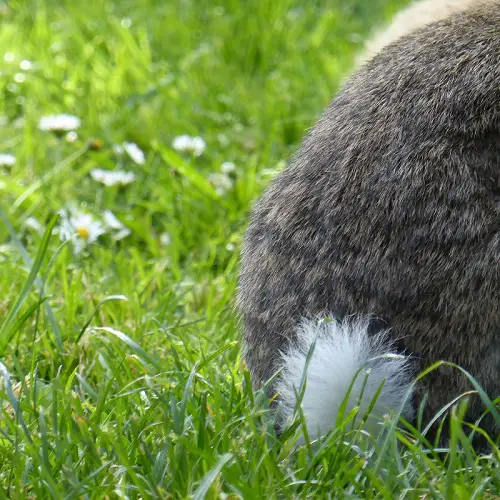
The rabbit tail is a minor part of the rabbit anatomy. It is fluffy white and resembles a deer’s tail.
The white tail is meant to distract predators when they are running after them. When behind them, predators will run watching the tail.
If the rabbit makes a sudden turn, that will confuse them and it may take them a few moments to locate them again. A rabbit can use this short break to hide.
Rabbits also use their tails to signal to others in case of danger. A sudden thrust of the white tail communicates to others that there is danger nearby.
Rabbit Fur
Rabbit fur comes in many varying colors. Wild rabbits are able to camouflage their fur to look like their environment.
This helps them blend with the surroundings and prevents them from being easily noticeable.
Like other furry animals, rabbits shed their fur seasonally to adapt to the weather changes.
Shedding helps them avoid getting too hot or too cold. They shed the fur from the head towards the back.
Rabbit Reproductive System
Rabbits have a short gestation period of around 30 days. A litter can have as many as 14 kittens.
A new mother can get pregnant the next day after giving birth. This means that bunnies can have babies every month of the year.
If they are not neutered or spayed, they may become too many to handle. Wild rabbits are faced with harsh conditions and predators, but they keep increasing in number. This is because of their fast reproduction rate.
Wild rabbits have a lifespan of 1-2 years while pet rabbits can live for 8-12 years.
Rabbit Hind Legs
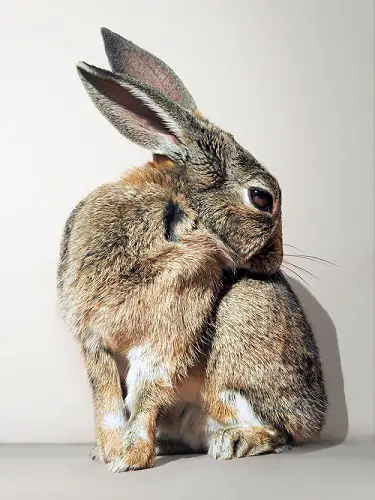
The hind legs in a rabbit’s anatomy are very strong. Most of their strength is in these legs and this makes them have weak backs. The back can easily get injured because it is brittle.
If kids are handling pet rabbits, they should be supervised. Bunnies should be held near the ground to prevent them from fidgeting and getting dropped.
Conclusion
The rabbit anatomy is not too complicated. Each body part has its own functions. Knowing about your rabbit’s body parts helps you to take care of them better.
Other important factors to learn about are your pet breed’s requirements and their preferences. Providing what your bunny needs keeps them happy and healthy.
Emma is a young, enthusiastic veterinary assistant based in Portland, Oregon. She has a natural affinity for all things fluffy, with rabbits being her absolute favorite. She got her first rabbit, a Holland Lop named Pippin, at the age of 7 and has been head over heels for them ever since. Emma holds an Associate Degree in Veterinary Science from the Portland Community College and has been working in a small animal clinic for the past 2 years.
